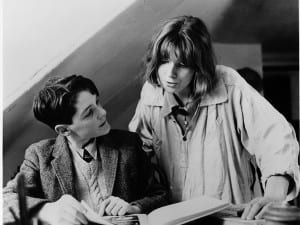Yorkshire Sculpture Park, Wakefield, presents a new exhibition that responds to the exceptional environment and light qualities of its 18th century chapel based in the grounds. With 15 sculptures, installations and films made between 1978 and 2014, the show considers how artists have investigated issues such as truth to material, the everyday, and – adhering to the title – transparency.
Works produced within a period of openness from politicians, corporations and other institutions can be seen as a contextual influence for the art, and as such, YSP reflects a monumental shift in British culture based upon this intrigue for veracity in day to day life. In this way, the new exhibition seeks to extend the very definition and semantics of transparency, from the property of transmitting light, being diaphanous and having clarity, to being free from pretence or deceit, of being readily understood and characterised by visibility or accessibility of information.
A significant amount of works come from the Arts Council Collection, featuring pieces by artists including Mark Titchner, Rachel Whiteread, Cerith Wyn Evans Yelena Popova – who contributes three works. Unnamed (2011), the artist’s first film, made as part of her MA at the Royal College of Art, recounts the story of the “secret town” she grew up in and its part in both the development of the Soviet Union’s first atomic bomb and a major nuclear disaster in 1957. Alongside this, two paintings from Popova’s Evaporating series (2014) are beautiful” transparent images”, delicate and fragile, which seem to recede into the raw fabric of their construction.
Cerith Wyn Evans’ contributions refer to her diverse background in sculpture, installations, photographs, film and text works that take into account how ideas, inspiration and memory can be shared through formal devices Diary: How to Improve the world (you will only make matters worse) continued 1968 (revised) from ‘M’ writings ’67-’72 by John Cage (2003), features a captivating and imposing chandelier at eye level and pays homage to a work by John Cage. The chandelier flashes on and off to convey a Morse code translation of Cage’s writings, which is then converted back into text on a nearby monitor.
Another notable artwork pivotal to the exhibition is St Mary’s No.1 (1978) by renowned British sculptor Garth Evans is part of a series begun by the artist in 1969–70 in which he sought to make something that could be defined as sculpture yet was not an “object.” Inspired by a pool of water in the artist’s chapel studio, the delicate, almost weightless piece accrues greater resonance in the context of YSP’s historic chapel.
Transparency runs until 4 September at Yorkshire Sculpture Park, Wakefield. For more information visit www.ysp.co.uk
Credits:
1. Preview of Transparency exhibition at YSP, Wakefield. Courtesy of YSP.




